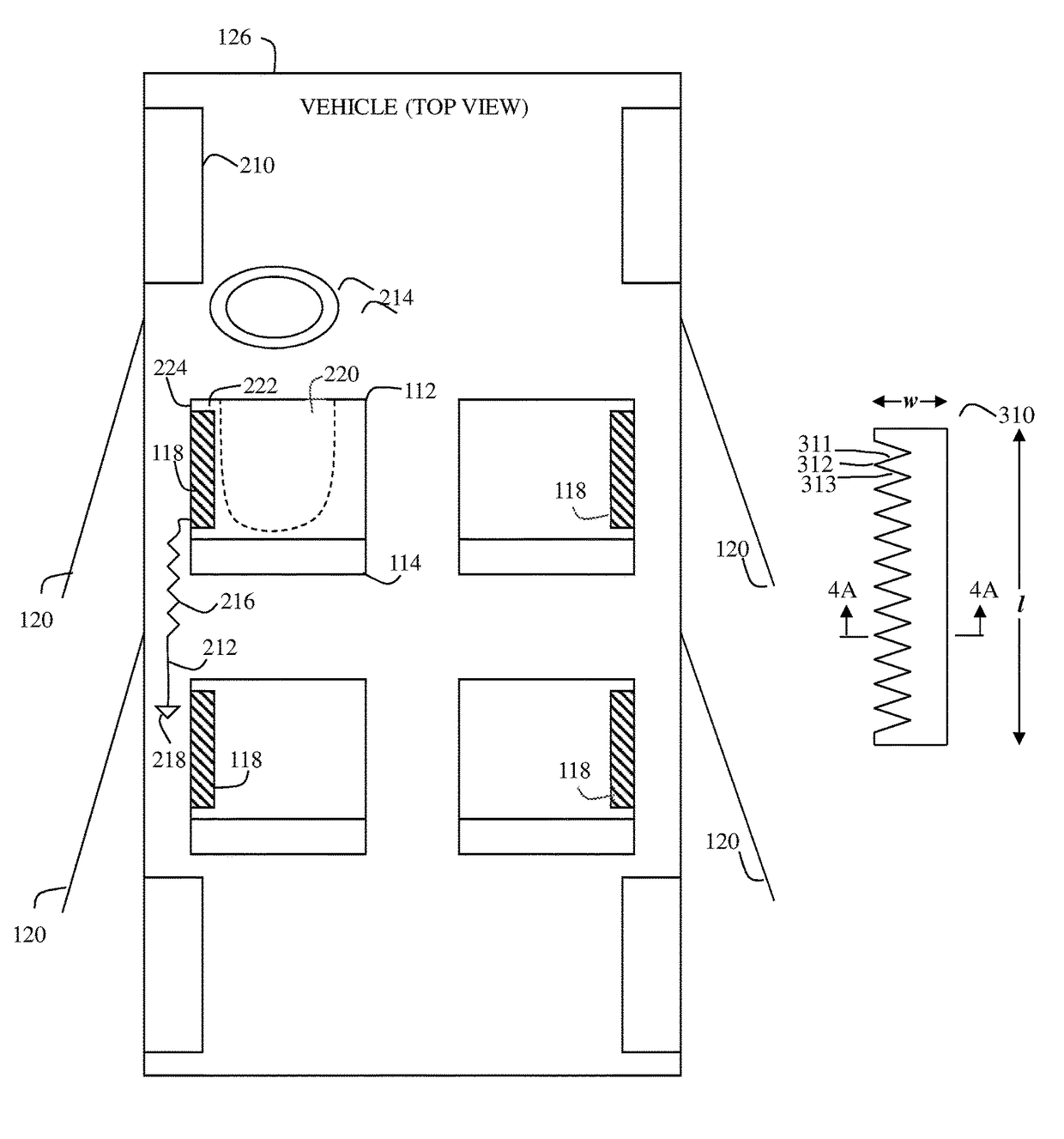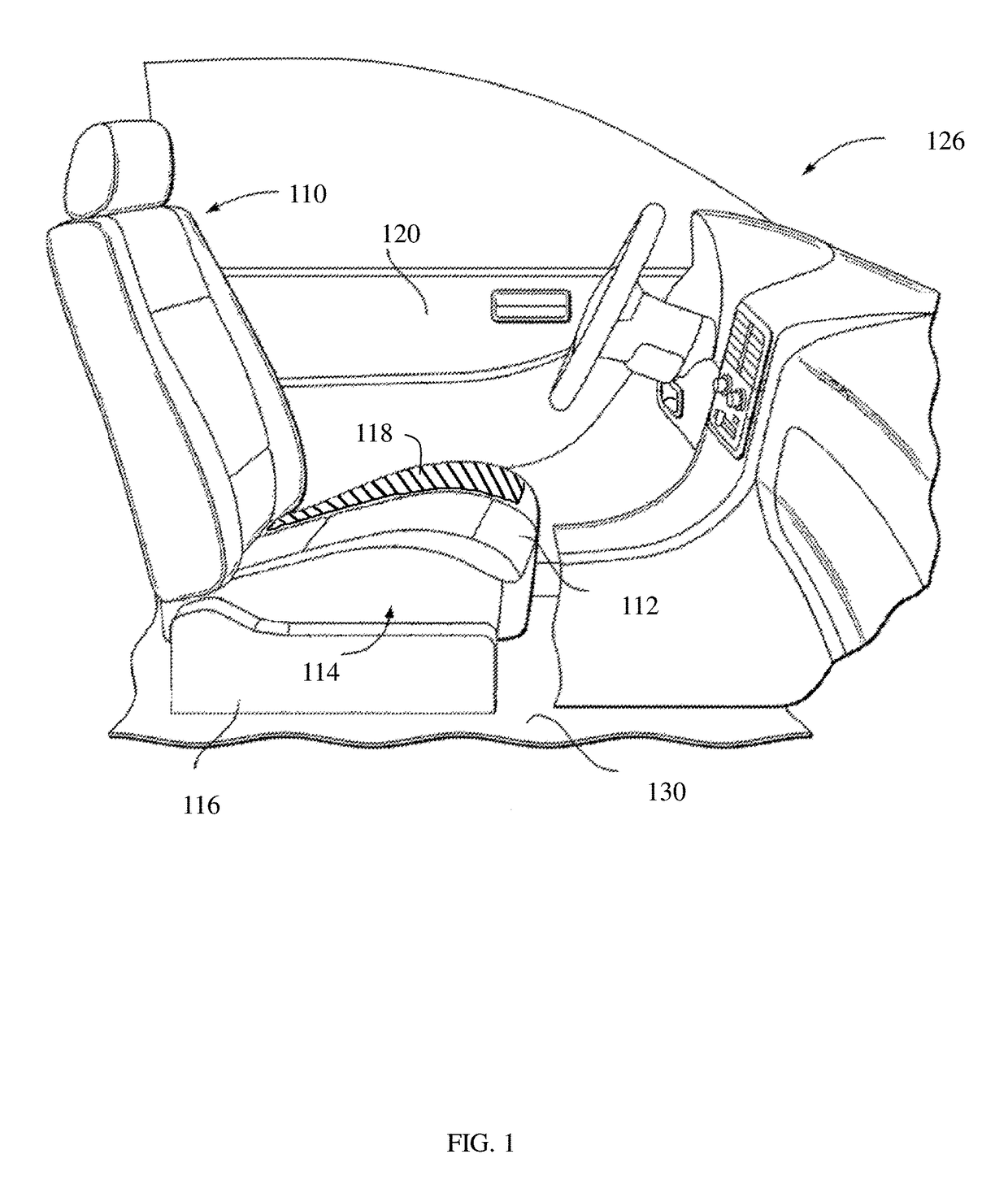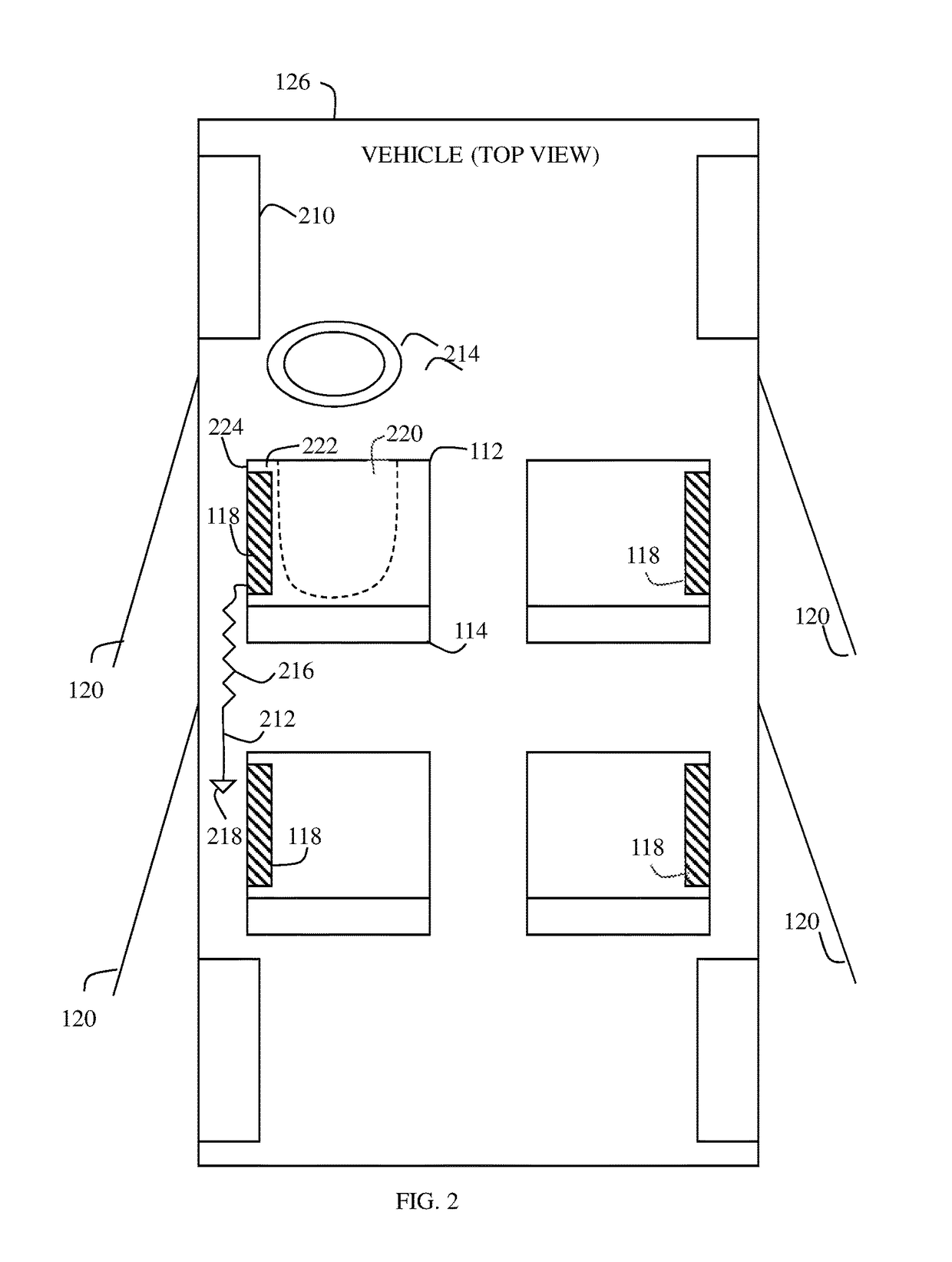Electrostatic discharge mitigator for vehicles
a technology of electric discharge and mitigator, which is applied in the direction of electric/fluid circuit, vehicle components, vehicle arrangements, etc., can solve the problems of prone to sparks, if any, and achieve the effects of reducing the need for behavior modification, increasing the vehicle cost, and increasing the chance of comprehensive esd mitigation
- Summary
- Abstract
- Description
- Claims
- Application Information
AI Technical Summary
Benefits of technology
Problems solved by technology
Method used
Image
Examples
first embodiment
One Edge of Seat Next to Closest Door
[0070]Referring to FIG. 1, in an exemplary embodiment, a conductive discharge path is provided by locating a chassis-connected electrode 118, indicated by the hatched area in the figure, on the upper surface of seat cushion 112, on the edge of seat 114 that is next to the nearest vehicle door 120. Referring to FIG. 2, on the left side of a vehicle, the edge of seat 114 next to the nearest vehicle door 120 is outboard edge 224; whereas on the right side of the vehicle, the outboard edge is the right edge. Outboard edge 224 is the most critical and effective location for an electrode used for the purpose of mitigating the subject ESD, since it is typically the very last part of the seat surface that occupants' legs or buttocks touch when exiting a vehicle. In other words, unless an occupant is so short that he is able to stand up and walk by the seat to exit the vehicle, he is bound by gravity to slide his bottom over the outer (or door-facing) edg...
second embodiment
ng Serrations on the One Edge of Seat Next to Closest Door
[0082]In a second embodiment, an electrode includes pointed shapes in its construction that further increase the electric field intensity, which may promote even more complete discharging, for the reasons described above.
[0083]FIG. 4 shows an example of this in which a substantially flat electrode 310 includes a plurality of pointed serrations, an example of which is pointed serration 312, with a first side 311 and a second side 313 joined together to form an apex and a first angle 332. A cross-section of electrode 310 is shown in FIG. 4A. Any of the construction methods and materials disclosed for the first embodiment may be used to fabricate electrode 310. Each pointed serration 312 serves to further increase the electric field for a given charge when positioned in the vehicle such that pointed serration 312 of electrode 310 preferably extends outward, towards the nearest vehicle door 120. Pointed serration 312 essentially ...
third embodiment
ing Raised Points on the One Edge of Seat Next to Closest Door
[0084]FIG. 5 shows an electrode 314 comprising a preformed conductive strip with multiple conductive raised points 316. The raised points 316 may extend from about 0.1 inches to about 0.5 inches above the surface of seat cushion 112. A cross-section of electrode 314 is shown in FIG. 5A. Raised points 316 may be an integral portion of a molded assembly, wherein the entire electrode 314, including raised points 316, is preformed by molding a conductive polymer, conductive polymer foam, or other conductive material, such as a metal, into a single part. Because each raised point 316 has a relatively small radius of curvature at its tip, electrical charge concentrates at any raised point 316 in proximity to a charged person 510, and increases the electric field near person 510, in a similar manner to that of the other embodiments with sharp geometrical features, consequently reducing the charge buildup on person 510 more effec...
PUM
 Login to View More
Login to View More Abstract
Description
Claims
Application Information
 Login to View More
Login to View More - R&D
- Intellectual Property
- Life Sciences
- Materials
- Tech Scout
- Unparalleled Data Quality
- Higher Quality Content
- 60% Fewer Hallucinations
Browse by: Latest US Patents, China's latest patents, Technical Efficacy Thesaurus, Application Domain, Technology Topic, Popular Technical Reports.
© 2025 PatSnap. All rights reserved.Legal|Privacy policy|Modern Slavery Act Transparency Statement|Sitemap|About US| Contact US: help@patsnap.com



